Not sure how to eat oysters? Check out our step-by-step guide so you can order your next freshly shucked dozen with confidence.
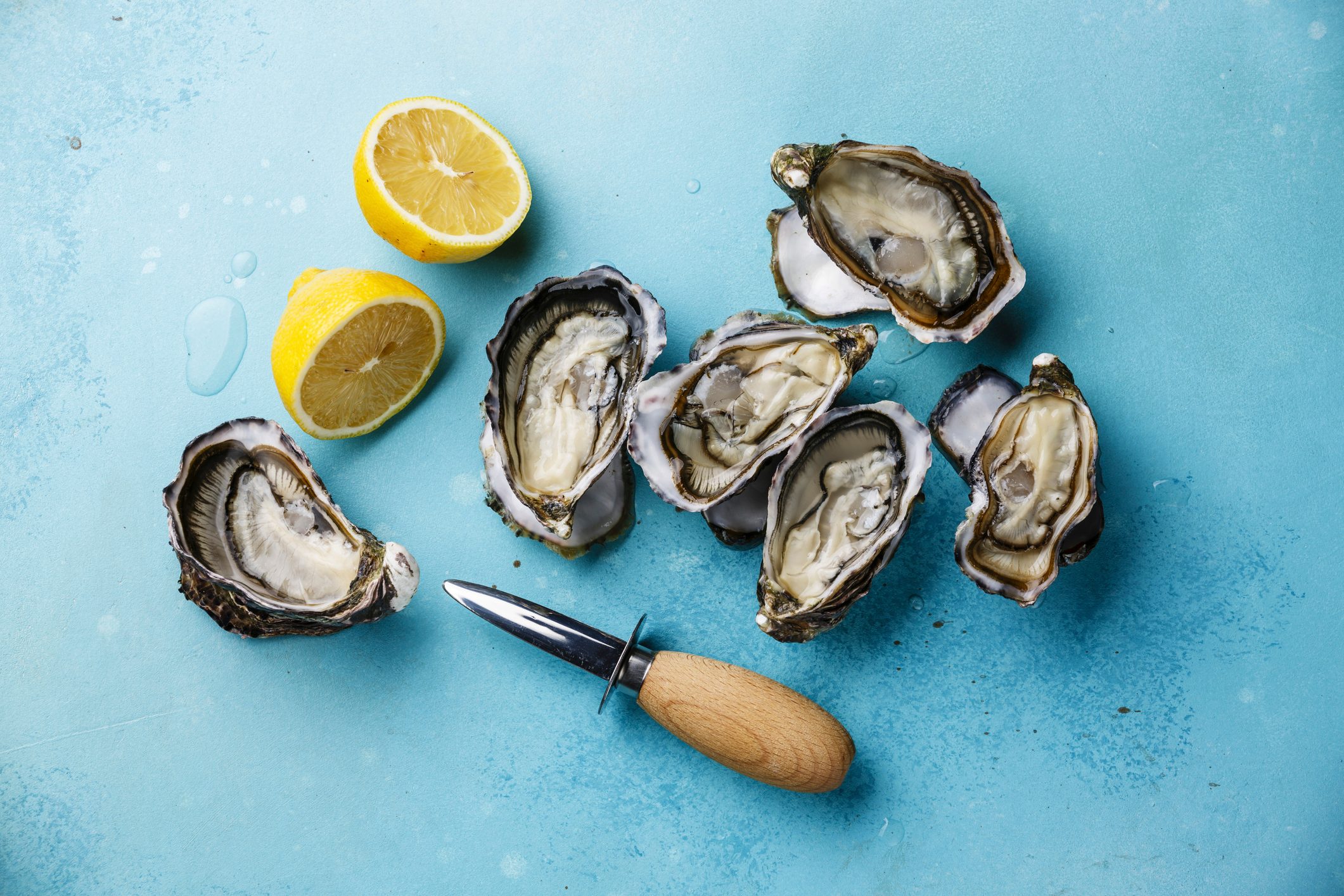
How Do You Eat Oysters the Right Way?

The first time I ate an oyster, I had no idea what I was doing. I was 17 years old on a school trip to Boston and was too embarrassed to ask, “How do you eat oysters?” or inquire about any etiquette rules that might exist at a casual New England seafood shack. Instead, I tried copying what people seemed to be doing at other tables and got it only partially right. The oyster liquid ended up dribbling down my face, I got bits of shell in my mouth and, worst of all, the slipperiness of the oyster caused me to break out into a fit of laughter, causing everyone in the near vicinity to turn and look at me as I made a spectacular mess of myself. These days, I’m a veteran food writer, cookbook author and former professional chef who’s eaten and shucked her fair share of oysters, so I can help you avoid a similarly embarrassing fate.
Basic table manners dictate that in most instances, slurping your food and eating with your hands are big no-nos. But when it comes to oysters, those rules should be thrown out the window. Whether you’re at a coastal seafood shack or a five-star restaurant, you should eat raw oysters with your hands. And even though there are some guidelines, says etiquette expert Diane Gottsman, founder of the Protocol School of Texas, “there’s really no oyster police. Just make sure to use your napkin.”
So how do you eat oysters the right way? In addition to relaying my hard-earned knowledge, I spoke with Gottsman and Jasmine Norton, chef and owner of the Urban Oyster in Baltimore, to get you the definitive answer. Read on to find out everything you need to know about enjoying these deliciously salty little morsels.
Get Reader’s Digest’s Read Up newsletter for more etiquette, food, humor, cleaning, travel, tech and fun facts all week long.
What are oysters?
Oysters are shellfish—bivalve mollusks, to be exact—that can be found in saltwater seas, estuaries and oceans around the world. Oyster shells are shucked (the method used to open the oyster to access the fresh meat inside), and then the oysters are often served raw on the half shell. Of course, they can also be battered and deep-fried, steamed, grilled or used in various seafood dishes, such as seafood pastas or chowder.
The insides of oyster shells are lined with a shiny, iridescent layer called nacre, better known to most jewelry aficionados as mother-of-pearl. And here’s an interesting fact: This is what some oysters use to make pearls. However, not all oysters do this, which is why naturally harvested pearls are exceedingly rare.
As far as how a raw oyster tastes, it varies by species, according to Norton. “Some are more salty than others, depending on the region where they are sourced,” she explains. But while every oyster has its own unique flavor profile reflective of the waters it’s grown in, they can all be described as briny with a light sweetness—and they taste a bit like the ocean.
How to eat oysters
The first thing you need to know? “Oysters are considered finger food, and no utensil is necessary,” says Gottsman. “The shell is the tool used to convey it to your mouth.” But there’s a little more to it than that, of course. If you’ve never tried eating freshly shucked oysters before, or you have but aren’t sure if you’re doing it correctly, read this step-by-step guide before ordering.
1. Select your oysters

Unless you live in a seaside town where you can buy fresh oysters straight from the source, your first raw-oyster experience should be at a reputable restaurant or seafood bar. This will allow you to taste a variety of oysters so you can determine your preferences. Most waiters will also tell you the region where your oysters were caught. Oysters from the West Coast are known for their subtle sweetness and strong briny flavor that can be reminiscent of cucumbers or melons. The waters of the Atlantic aren’t as salty as the waters of the Pacific, so East Coast oysters have a milder taste with a softer, more tender texture.
2. Loosen the oyster from the shell
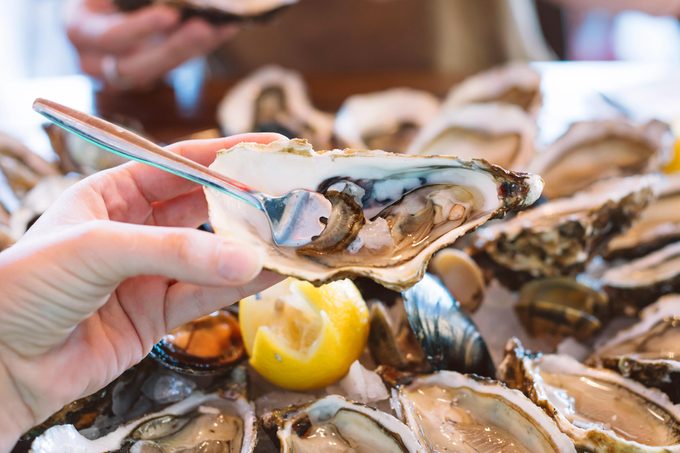
Use an oyster fork or another small utensil to gently lift the oyster from the shell, being careful not to spill any of the flavorful liquid, which is known as “oyster liquor.” This ensures the oyster meat has been fully detached from its shell. If your oyster has been professionally shucked, it should lift right up. “Avoid using the tiny utensil to try and cut the oyster in half,” warns Gottsman. “[That’s a sign] someone has never eaten an oyster before and is not sure what to do with the little fork.”
3. Dress your oyster (optional)

Oysters don’t need any help being delicious, which is why many people love slurping them directly out of their shells the moment they’re shucked. If it’s your first time eating oysters, try them plain so you can fully appreciate what they taste like naked. Once you understand their flavor, feel free to dress an oyster on its shell with sauces, seasonings and toppings.
Restaurants often present oysters on a bed of ice and with common accoutrements, such as lemon wedges, hot sauce, cocktail sauce, mignonette sauce (a mix of vinegar, shallots and pepper) and horseradish. Personally, I like to keep things as simple as possible so I can enjoy the true taste of the oyster. I always eat the first one plain, and if I think the natural taste can benefit from a little something else, I might dress the rest with a squirt of lemon or a light drizzle of mignonette.
4. Tilt and slurp

Tilt the shell straight into your mouth, letting the oyster meat and liquor slide into your mouth, similar to how you’d down a shot of alcohol. Take a few moments to savor the flavor, chewing lightly if you care to—oysters are tender enough that they don’t require chewing and can be gulped down as is.
If you’re at a casual seaside shack, you don’t really need to be concerned with decorum. However, if you’re at a nice restaurant or dinner party, Gottsman says to be careful not to make loud slurping noises: “Some noises understandable, but if it sounds as if you are slurping your soup, it is an inappropriate sound.”
5. Flip the shell
Now you know the answer to the question “How do you eat oysters?” But there’s one more step in the process! Once you’ve finished your oyster, place the shell face down on the ice or platter it was served from. You may also place it face down on a plate you’ve dedicated for shells. “Placing the shells face down signals that the oysters have been eaten and enjoyed,” says Gottsman.
FAQs
Is it better to chew or swallow oysters?
If you’re eating a raw oyster, swallowing them whole is the way to go. This has nothing to do with making an etiquette mistake and everything to do with fully enjoying the flavor of an oyster. “I would only chew a grilled oyster but swallow a raw one,” says Norton. “And if I am chewing, my rule of thumb is no more than two chews.” The naturally slippery texture of the oyster encourages this: Once the oyster is in your mouth, your natural instincts will tell you to swallow rather than chew, just as if you were eating pudding or soup.
Are oysters alive when you eat them?
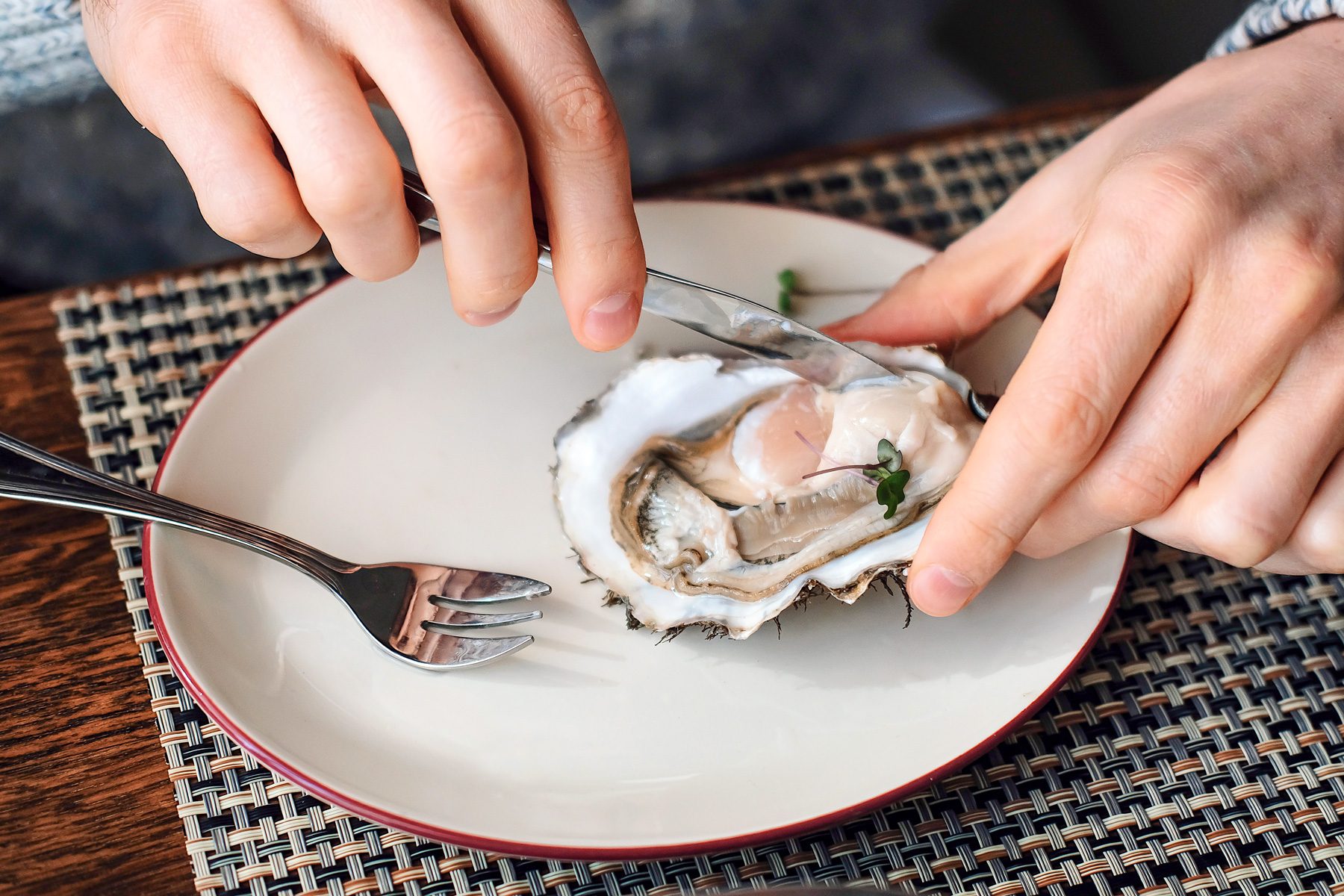
If you’re eating freshly shucked oysters on the half shell, the answer is yes. “Oysters should be eaten the day they are shucked, which means they are still alive. Alive means fresh,” says Norton. Pretty much every oyster you’ll ever come across will be sourced from a highly regulated commercial oyster farm, where they’re grown in saltwater that’s regularly tested for cleanliness. They’re also kept at cool, controlled temperatures from seeding to serving, so the risk of getting sick from a freshly shucked raw oyster is minimal.
Once an oyster is shucked, it dies, which makes it hospitable to bacteria and other pathogens. This is why pre-shucked oysters should be cooked before serving. Don’t worry if you’re too squeamish to eat a live oyster—even though they taste different than when they’re fresh, cooked oysters are still delicious!
How do you know if an oyster has gone bad?
“Oysters are very telling when they’re not fresh,” Norton says. “The smell radiates! When you know, you know.”
When you sniff an oyster, you should be able to smell the salty brine of the ocean, but you shouldn’t smell anything aggressively “fishy.” Remember: Your senses of smell and taste are connected, so if something smells bad, it will taste bad too.
What are the best ways to eat oysters?
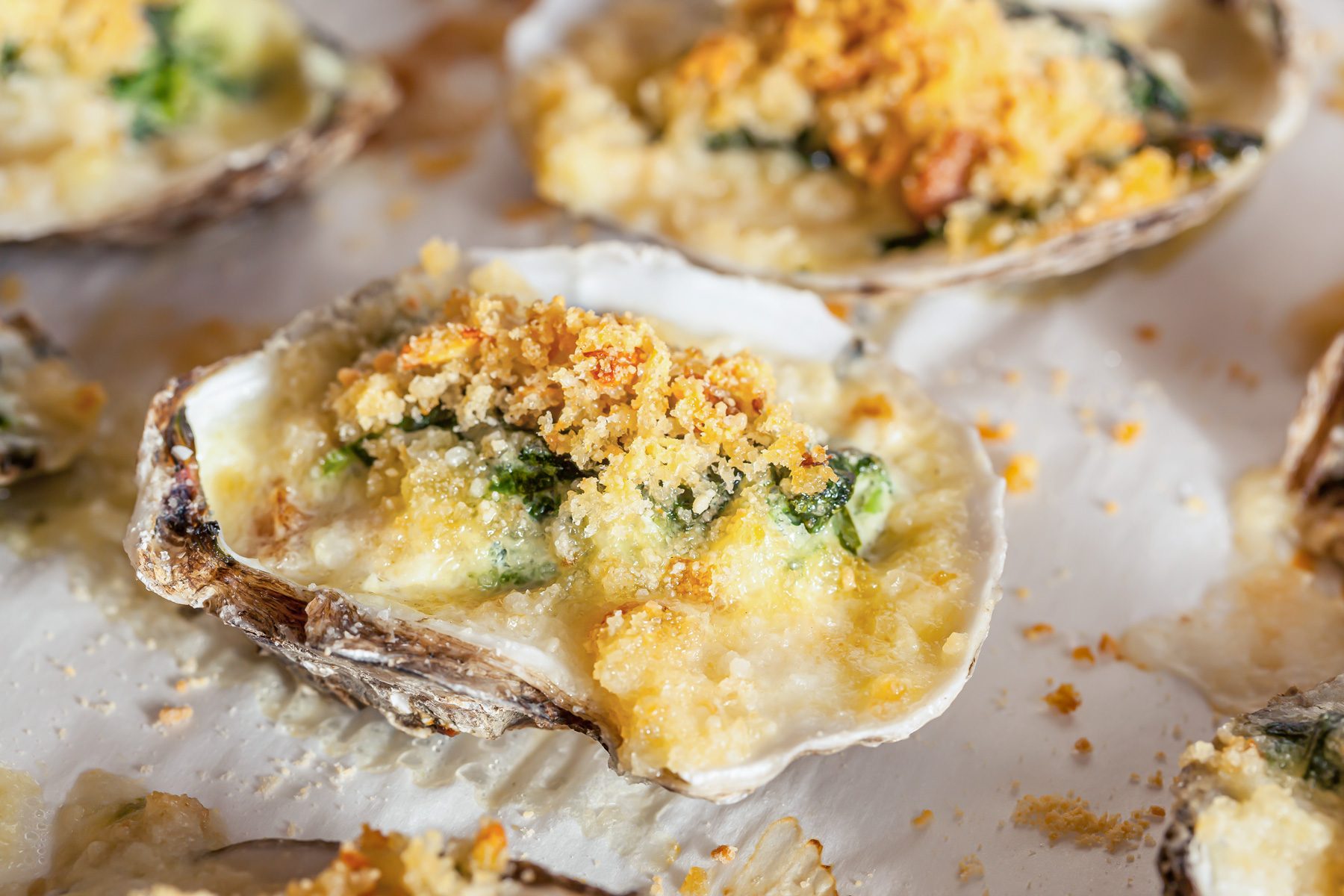
Eating them raw is, by far, the most popular way to eat oysters, but that doesn’t mean it’s the only way. Oysters can be steamed, grilled or roasted, just like any other type of shellfish. They can also be used in recipes like oyster chowder or stew. Another famous preparation is Oysters Rockefeller, which involves topping shucked oysters on the half shell with butter, parsley and breadcrumbs, then broiling them till golden. Yum!
How do you prepare fresh oysters to eat?
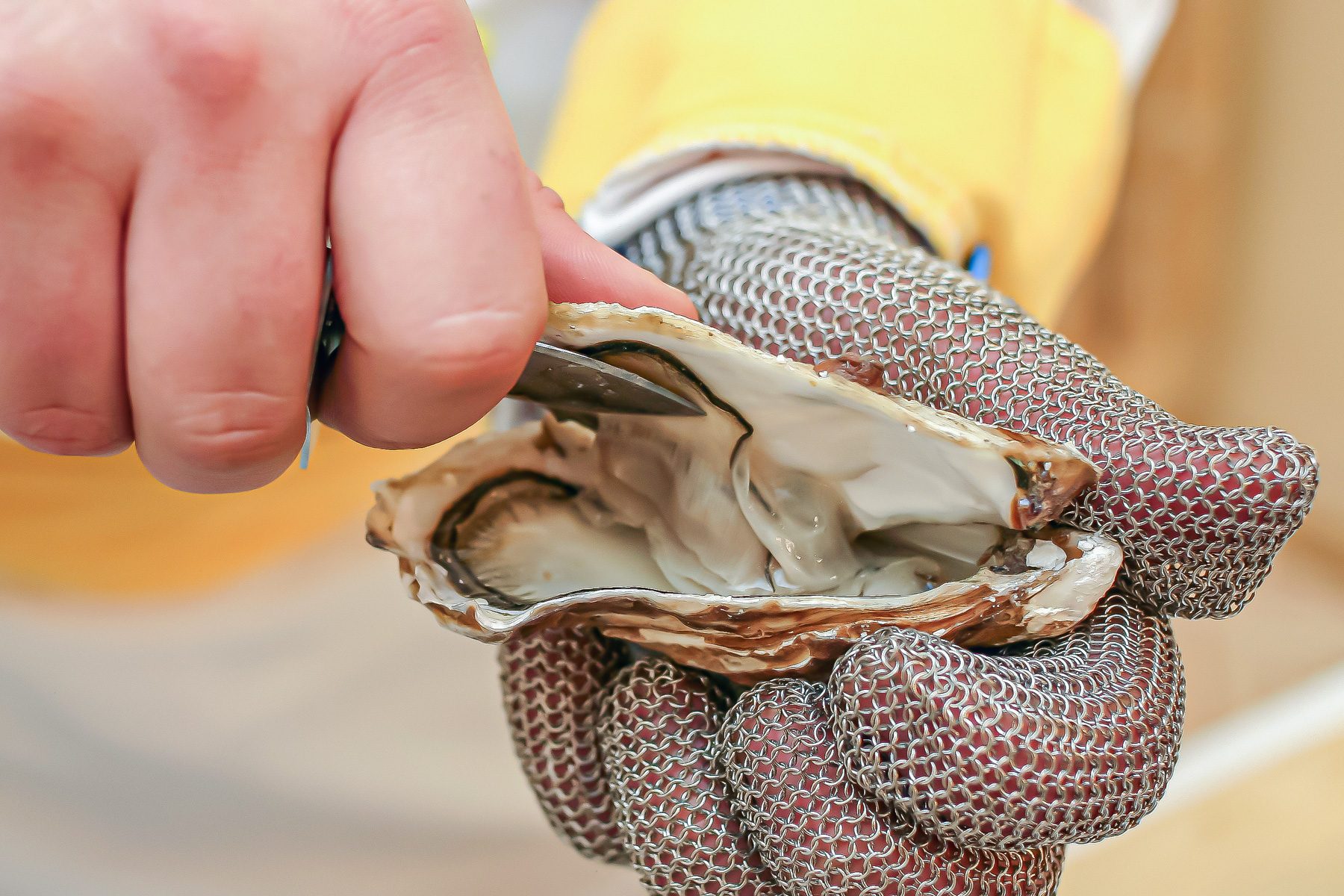
If you’re enjoying your oysters at home, you’ll need to shuck them yourself right before eating them. Shucking oysters requires special equipment and a good amount of skill—and it can be dangerous if you don’t know what you’re doing. If you’re insistent on doing it yourself, buy an oyster-shucking set that includes an oyster knife and protective gloves, and be sure to watch an instructional video to learn precisely how to do it.
Should you drain oysters before eating them?
“No, definitely not!” Norton says emphatically. “This is where all the good salty flavor comes from.” If you’re cooking with oysters, reserve the oyster liquor and add it to your dish. If eating them raw, slurp the liquor along with the oyster meat.
Are there certain times of the year when oysters are fresher?
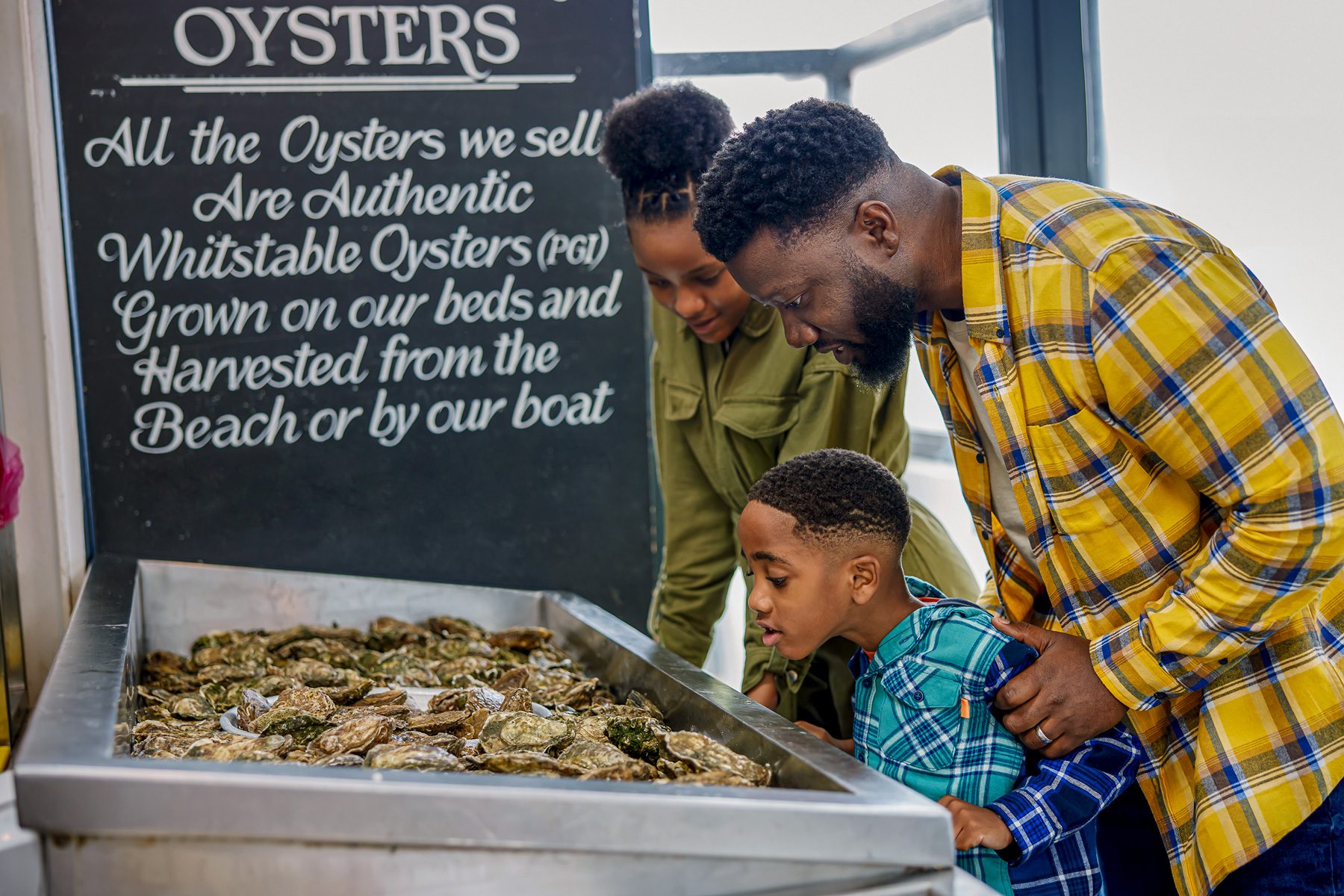
The biggest rule for eating oysters used to be to eat them in months containing the letter “R”—basically, from September through April—but this advice became obsolete with the advent of commercial refrigeration and strict standards for farmers, distributors and oyster handlers. Oysters are kept under cold conditions the moment they’re plucked from the water, so they’re always safe to eat.
About the experts
|
Why trust us
Reader’s Digest has published hundreds of etiquette stories that help readers navigate communication in a changing world. We regularly cover topics such as the best messages to send for any occasion, polite habits that aren’t as polite as they seem, email and texting etiquette, business etiquette, tipping etiquette, travel etiquette and more. We’re committed to producing high-quality content by writers with expertise and experience in their field in consultation with relevant, qualified experts. We rely on reputable primary sources, including government and professional organizations and academic institutions as well as our writers’ personal experience where appropriate. For this piece on how to eat oysters, Allison Robicelli tapped her longtime experience as a food writer, cookbook author and chef. We verify all facts and data, back them with credible sourcing and revisit them over time to ensure they remain accurate and up to date. Read more about our team, our contributors and our editorial policies.
Sources:
- Diane Gottsman, owner of the Protocol School of Texas; email interview, August 2024
- Jasmine Norton, chef and owner of the Urban Oyster; email interview, 2023























